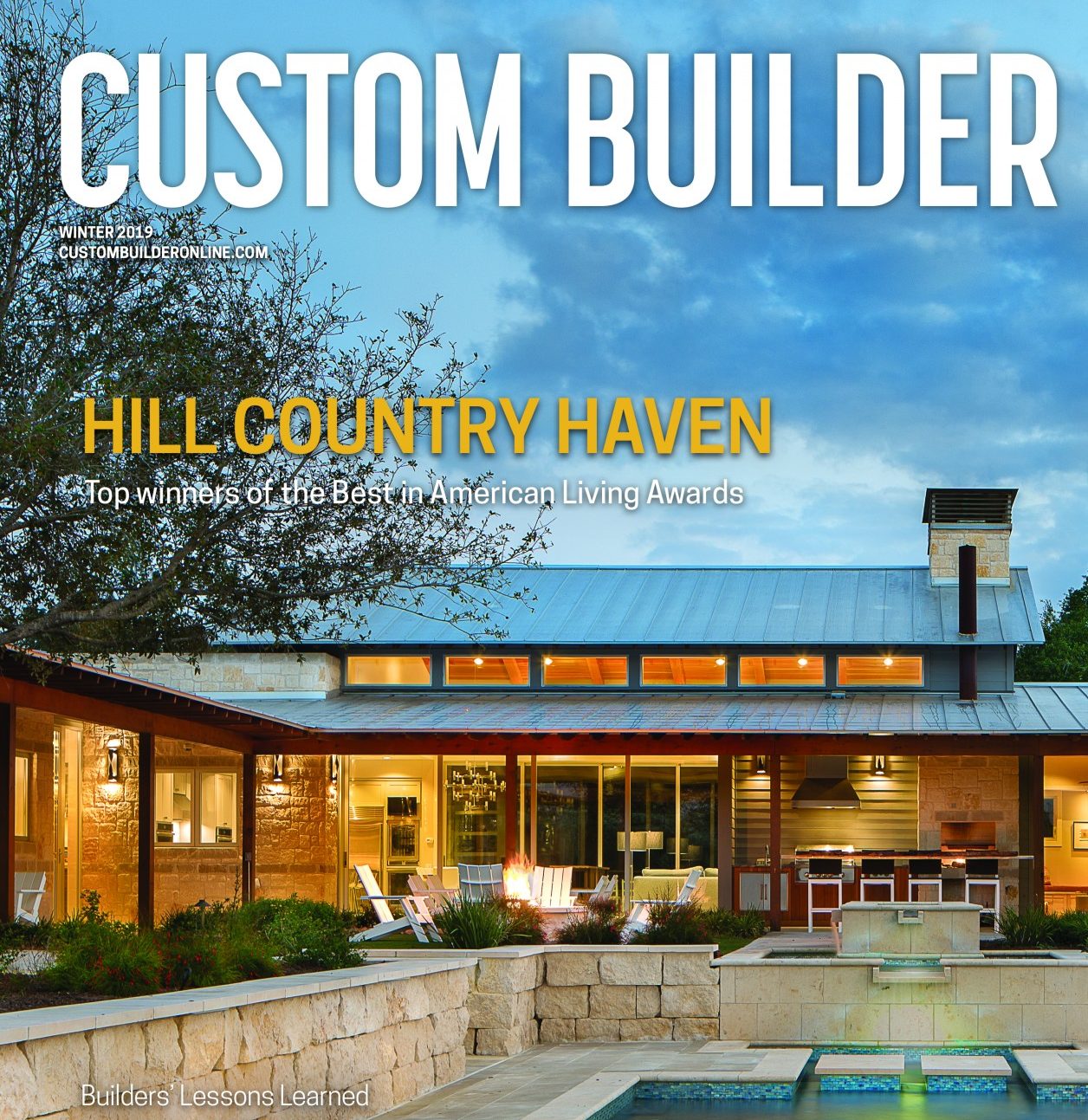Feature Article | Custom Builder Magazine, Winter 2019
Time-Machine Lessons
Our principals – Darren and Bob – were featured in the Winter 2019 issue of Custom Builder Magazine. Read an excerpt below or the full article here.

We ask custom builders: If you could redo your first house or revisit the first years of running your business, what would you do differently?
by Mike Beirne, Senior Editor
In a profession focused on schedule, process sequence, and lining up future projects, it’s a rare moment for a custom home builder to dwell in the past. So we approached seasoned builders and asked them to look back at their first project or the early years running their companies and tell us: If you could revisit that time in your career—armed with knowledge and experience acquired from decades in the business—what would you do differently?
One of the more profound responses came from Kevin Estes, who has 30 years in the business: “I would have asked for help sooner,” says the president of Estes Builders, in Sequim, Wash. “I felt like I had to figure out everything on my own. For many years, I thought I was the only person who had these problems. As it turns out, we’re all facing the same challenges.”
Estes started his company at age 28, after working for his father’s home building firm. One year, at an International Builders’ Show, he attended a presentation about financial benchmarking and then followed up with the presenter to learn more. That relationship launched Estes on a path that connected him with an NAHB 20 Club, more mentors, and outside consultants.
“Just having access to that knowledge opened my eyes to how many experts are out there,” Estes says. “I could have saved myself so much grief and time. Much of [my journey through] the school of hard knocks could have been paved with outside help.”
Jon Schoenheider, co-owner of Regency Builders, in Pewaukee, Wis., joined a chapter of the YPO (Young Presidents’ Organization), a global network of senior managers under 45 years old. “That was immensely powerful for me because, during those eight years [while I was a member], I gained a wealth of knowledge from outside industries,” he says.
One of those outside-industry connections was with a company that produces dietary supplements manufactured from ingredients harvested from its own organic farm. Like Regency, the Palmyra, Wis., manufacturer was family owned and both of the businesses’ owners shared a mission of giving back to the community. The owners met during a YPO tour of the supplements factory, became fast friends, and eventually collaborated on building a 7,000-square-foot commercial building that serves as the supplements producer’s education center, with interactive exhibits for visitors.
Darren Andreoli and Bob Sprouls, principals of Bluewater Home Builders, in Westport, Conn., occasionally took their entire team off-site for a day just to brainstorm about how to improve the company, inviting consultants to facilitate those meetings. “If you bring in an outside consultant who doesn’t have experience in your field,” Sprouls says, “you can get more outside-the-box thinking that helps you to be more creative in generating fresh solutions and figuring out how to implement them.”
Hiring And Firing
The most oft-repeated lesson the builders we spoke with said they had learned concerned staffing. Surround yourself with the best people, take care of them, and create a positive culture, says Sean Sullivan, president of Living Stone Design + Build, in Black Mountain, N.C.
How do you do that? Hiring experienced candidates and finding candidates via personal references certainly helps, but to guarantee a good fit, there must be more to the process. So Sullivan has prospects take personality tests, among them Dr. Gary Smalley’s 5-Minute Personality Test, which categorizes a person’s strengths, weaknesses, and natural inclinations into four animal types: lion, otter, golden retriever, and beaver.
“Based on the results, we can decide if the person is right for that job or would be a better fit in a different position. We’ve been using that method for about five years,” says Sullivan, adding that his wife, Laura Kirkpatrick Sullivan, owner of ID.ology Interiors & Design, in Asheville, N.C., also uses personality tests in her hiring process.
Firing employees who don’t work out is just as important as finding the right people. “I think a lot of new business owners have the same failing,” says J. Sven Gustafson, a fourth-generation builder and 20-year home building veteran who is president and CEO ofStonewood, in Wayzata, Minn. “Maybe you have an employee who’s good at building a house but not good at paperwork. So you let him skate by because he’s good at a few things but not good on every point. I was really slow to let guys go who had been with us a long time. They had been with my dad 10 or 20 years but couldn’t manage a budget or were unwilling to consistently do change orders. But they could build a heck of a house. I’ve learned that the reason we’re successful today is our team. We have guys who are well-rounded and able to manage all aspects of the project.”
Reflecting on 14 years of home building and on relationships with employees as well as with subcontractors, suppliers, and clients, Scott Frankel, co-president and principal at Frankel Building Group, in Houston, learned that he had to stop thinking he could always work or manage his way to a better outcome. “I needed to learn to give up on clients who couldn’t be good clients and on employees who couldn’t grow,” he says. “ I needed to learn to stop faster, and if there’s a client or an employee who is misbehaving, I’m not going to be able to change that behavior.”
Caleb Johnson, principal architect at Caleb Johnson Studio, in Portland, Maine, says it was just four or five years ago that he learned to more quickly get free of negative people, no matter how talented or hard-working they were. “It’s just too hard a job for a small business to help people grow into positive problem-solvers from people who are always looking for a reason to say no or to complain,” he says.
Protect Cash, Charge Enough
If Fred Delibero could redo the house he completed in 2002, the president of Summit Homes, a Clayton Properties division based in Lee’s Summit, Mo., says he would have charged more so his margin would have exceeded the less than
2 percent he earned from that job.
“While part of that dismal margin was because I didn’t understand my costs well enough, I also didn’t value my time and didn’t understand what it took in terms of profit to grow a sustainable business,” Delibero says. “To be honest, it took me a few years to really figure it all out. The other mistake I made—and it’s really directly related to profitability—is I thought I had to put a lot more than buyers expected in my homes in order to compete. I was, in effect, overbuilding my homes at the expense of profit. Knowing not only what your costs are, but also exactly what’s important to homebuyers—and what isn’t—in your market, will help you fine-tune your projects to maximize profits.”
Rather than running it like a business, some builders operate their companies like it’s a job where they’re earning little more than a wage. Small builders that are netting less than 8 to 10 percent after expenses and overhead, Delibero says, should ask themselves if building houses is worth the risk of being exposed to liability or being caught in a down market.
“It’s not enough to put some money in your pocket at closing,” Delibero says. “You must put enough money away to sustain you through the bad times, and you must earn enough to reinvest and grow your business for the future. I’ve seen countless builders operate for years without ever earning enough to grow the business and build value. Those are the same builders that quickly disappear in a down market, leaving lenders and buyers shortchanged.”

Johnson says he had to learn to protect his cash flow by being bolder: “Get extremely comfortable saying, ‘I’d love to get that done for you. Here’s a change order.’ Doing work that’s out of the project’s scope because of unclear contracts, or just being too nervous to ask for more money, has always been a weakness. We, as a group, want to do great work, but it’s easy to work yourself out of business by not guarding cash flow. Our work is valuable and we need to be paid.”
Bluewater Home Builders’ Andreoli and Sprouls agree that builders have a bad habit of not submitting change orders when appropriate out of fear of letting down the customer or because the builder isn’t organized enough to produce change orders in a timely fashion.
“Early on in the business, too many times we wouldn’t submit change orders when there was a change of scope because we didn’t want to disappoint the customer, or we’d delay submitting them because we dreaded the paperwork—sometimes up to the point when it became too late,” Sprouls says. “We’re now much more disciplined with change orders. The key is to make sure the customer understands what requests trigger them and then to stay on top of the paperwork. As a result, we are now better able to maintain the margins on a project that we initially projected.”
This story originally appeared in the Winter 2019 issue of Custom Builder. See the print version here.





